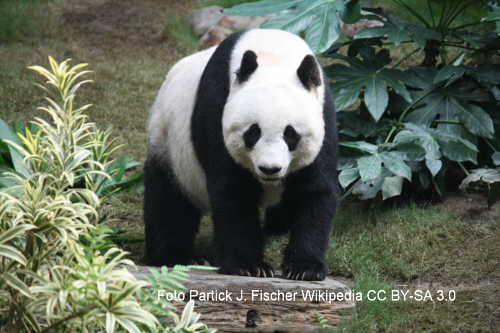Giant Panda (Ailuropoda melanoleuca)
description of the animal

Appearance
Giant pandas are known for their distinctive black and white coloring. They have large, round bodies, with black patches around their eyes, ears, and on their limbs.
Distribution
They are found in the wild exclusively in the mountains of central China, in Sichuan, Shaanxi, and Gansu provinces.
Habitat
Giant pandas live in broadleaf and coniferous forests with a dense understory of bamboo, at elevations between 1,500 to 3,000 meters.
Behavior
While generally solitary, they have a well-defined social hierarchy when their territories overlap. Pandas are primarily terrestrial but can climb trees and swim.
Diet
Though classified as carnivores, their diet is overwhelmingly herbivorous, consisting almost exclusively of bamboo.
Reproduction
Females are fertile only once a year for 2-3 days. After a gestation period of 95 to 160 days, they give birth to one or two cubs.
Threats
Main threats include habitat loss due to deforestation and fragmentation, and poaching. Conservation efforts are in place to protect their habitats and increase their population.
